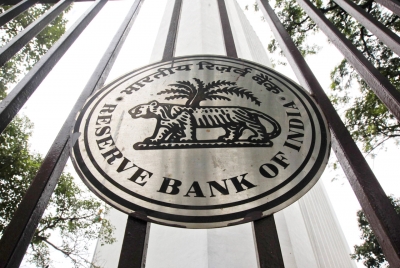RBI releases 'National Strategy for Financial Education: 2020-2025'
By IANS | Published: August 20, 2020 02:34 PM2020-08-20T14:34:55+5:302020-08-20T14:50:17+5:30
-2025. The NSFE 2020-25 intends to support the Centre and financial sector regulators' vision of empowering various sections of ...

RBI releases 'National Strategy for Financial Education: 2020-2025'
-2025.
The NSFE 2020-25 intends to support the Centre and financial sector regulators' vision of empowering various sections of society to "develop adequate knowledge, skills, attitudes and behaviour which are needed to manage their money better and to plan for the future".
"The strategy recommends adoption of a multi-stakeholder approach to achieve financial well-being of Ind," the RBI said in a statement.
Accordingly, to achieve the vision of creating a financially aware and empowered India, certain strategic objectives have been laid down which include inculcating financial literacy concepts among various sections of the population through financial education to "make it an important life skill".
"Encouraging active savings behaviour and developing credit discipline; improving usage of digital financial services in a safe and secure manner; bringing awareness about rights, duties and avenues for grievance redressal, etc," the statement said.
"In order to achieve the 'Strategic Objectives' laid down, the document recommends adoption of a '5 C' approach for dissemination of financial education through emphasis on development of relevant 'Content', developing 'Capacity' among the intermediaries involved in providing financial services, leveraging on the positive effect of 'Community' led model for financial literacy through appropriate 'Communication Strategy', and lastly, enhancing 'Collaboration' among various stakeholders."
As part of the exercise to prepare the the strategy paper, the National Centre for Financial Education (NCFE) also conducted a survey to find out the status of financial literacy in India. As per the survey, the percentage of population above the financial literacy threshold Is highest in Western India that houses the two major stock exchanges of the country while people in north East come a close second. Eastern and Central India still have to go a long way in updating their financial understanding.
Also, the salaried class in both the government and the private sector seems to understand financial products better than other segments. The amount of earnings also reflect financial understanding of people with those earning the highest crossing the financial education threshold easily while those in middle to lower income groups have still to do a lot of catching up.
Surprisingly, there has been a marked improvement in understanding financial products by rural India in the last five years with 24 per cent of the population now fairly aware about financial systems as against just 15 per of the population in 2013.
( With inputs from IANS )
Disclaimer: This post has been auto-published from an agency feed without any modifications to the text and has not been reviewed by an editor
Open in app